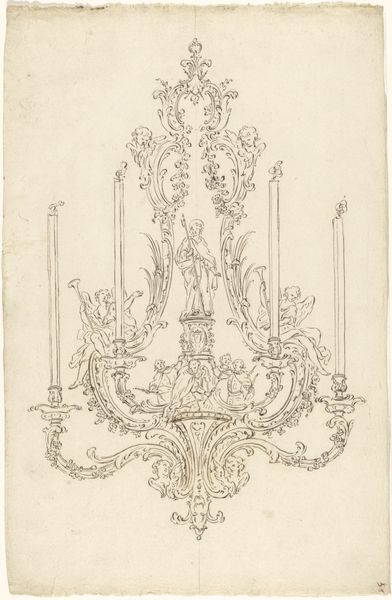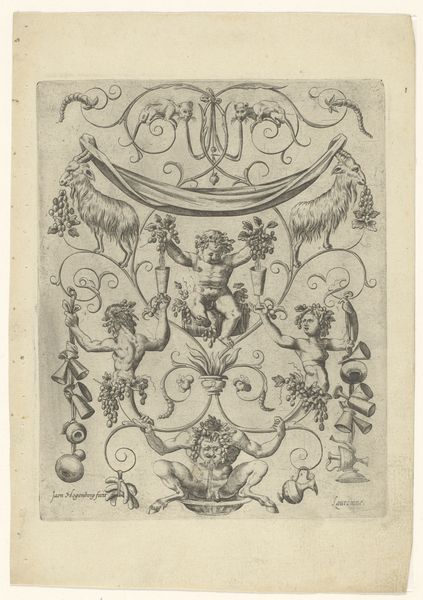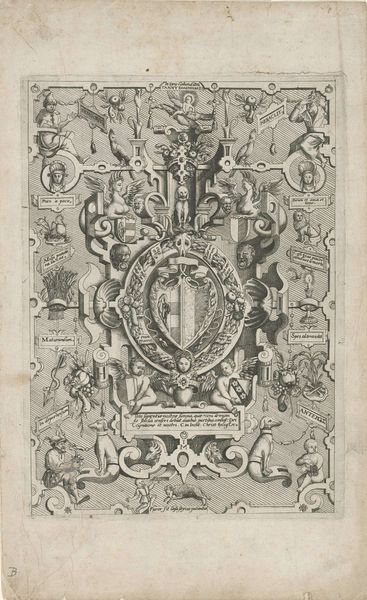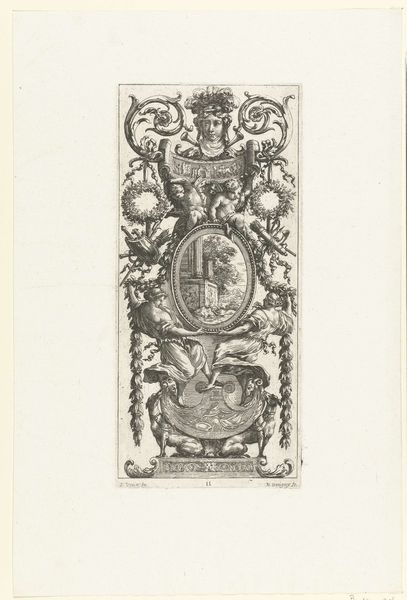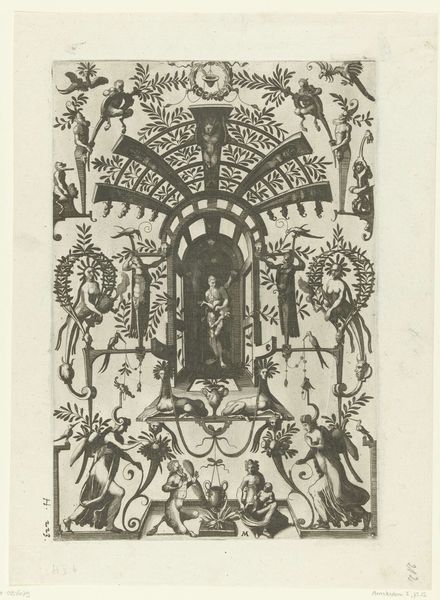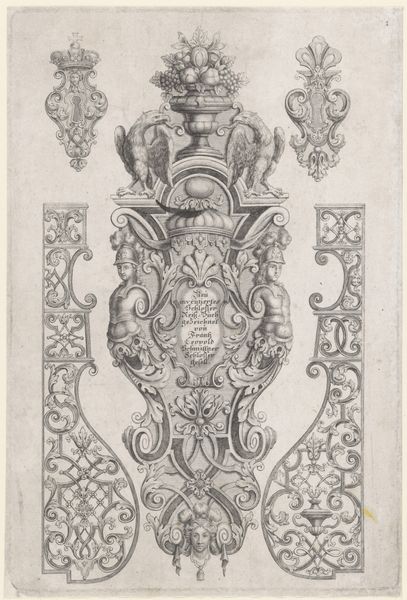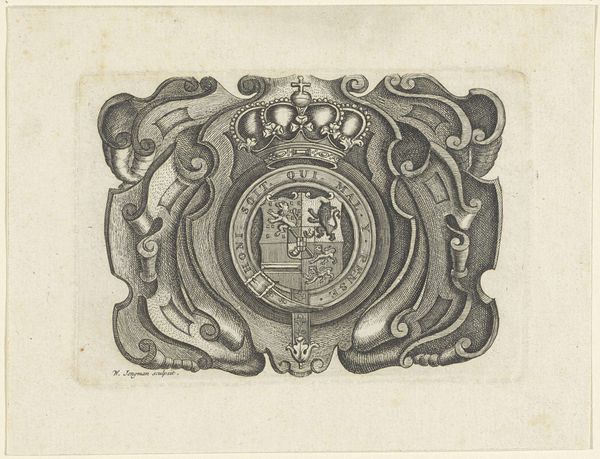
Christuskind in een brandend hart met allegorische figuren en objecten 17th century
0:00
0:00
print, engraving
#
allegory
#
baroque
# print
#
old engraving style
#
engraving
Dimensions: height 204 mm, width 158 mm
Copyright: Rijks Museum: Open Domain
Curator: Look at this intriguing print. Made in the 17th century, it’s titled "Christuskind in een brandend hart met allegorische figuren en objecten," depicting the Christ Child within a burning heart. It seems to be done in an old engraving style. Editor: It’s so intricate! All those lines, the density of detail... Makes me wonder how long it took to etch this plate. The cross-hatching gives a sense of depth, but the monochrome makes it feel very sober, almost somber, despite the rather theatrical imagery. Curator: It's packed with allegorical symbolism, very typical of the Baroque period. The burning heart is a classic emblem of divine love, with the Christ Child signifying pure, innocent devotion. Look at the figures flanking the central image— they’re holding burning torches, symbolic of divine love illuminating the soul, also hinting at judgment. Editor: What catches my eye is the repetition of grapes and grape vines which border the artwork: surely more than decoration. Were those materials locally sourced for the person that created the print, perhaps incorporated into the maker's or patron's own wines? Were these materials easily available to them? Curator: It’s more than mere decoration; the grapes definitely allude to the Eucharist and Christ's sacrifice. This is a common symbol we see to remind us about devotion to God. Given the religious context, accessibility to the source would not factor into the creator’s motivation to use those materials as symbolism. Editor: Still, that’s a really good reminder that an object always signifies an economy. Engravings like this were pretty accessible as art in this period compared to paintings - perhaps it speaks to its accessibility for commoners as well. Curator: Perhaps. Although these emblems could have functioned as a spiritual roadmap for anyone trying to cultivate deeper faith, printed imagery played a vital role in shaping devotion on all rungs of the social ladder. The iconography speaks to something deeply human and hopeful. Editor: From a making and consumption perspective, its role as an art object makes more sense - reproducible in a way paintings were not and therefore something more easily commodified. Thanks to those repeatable engraved lines. Curator: So true. Looking closely, there's something that stays with you after encountering this, which transcends the method of its construction. Editor: It's remarkable to ponder the many, and reproducible, ways in which someone could engage with religious ideas at that time.
Comments
No comments
Be the first to comment and join the conversation on the ultimate creative platform.
